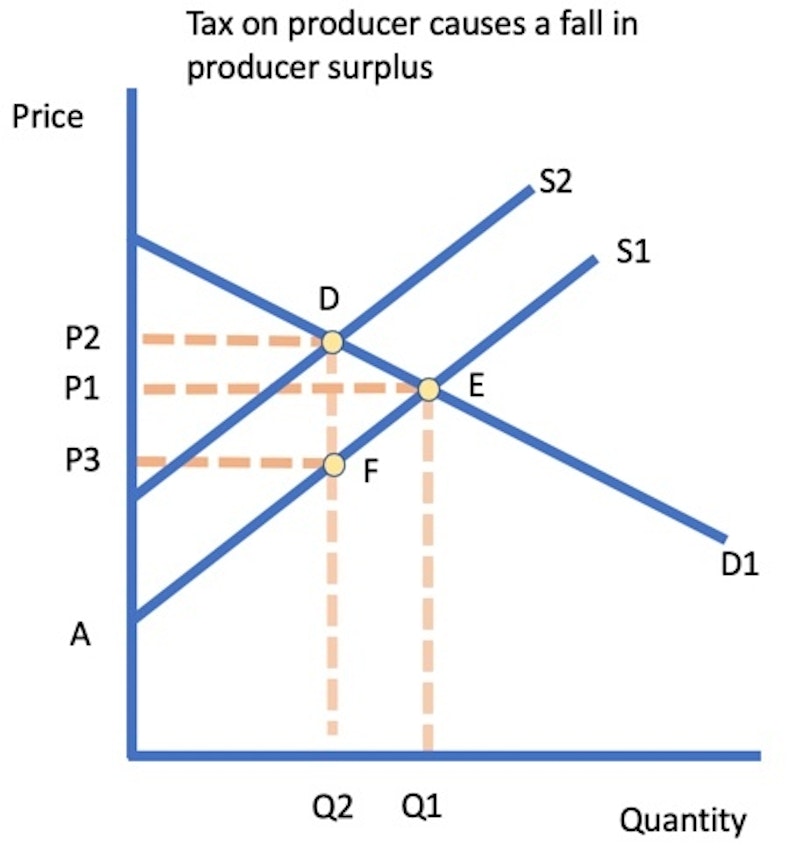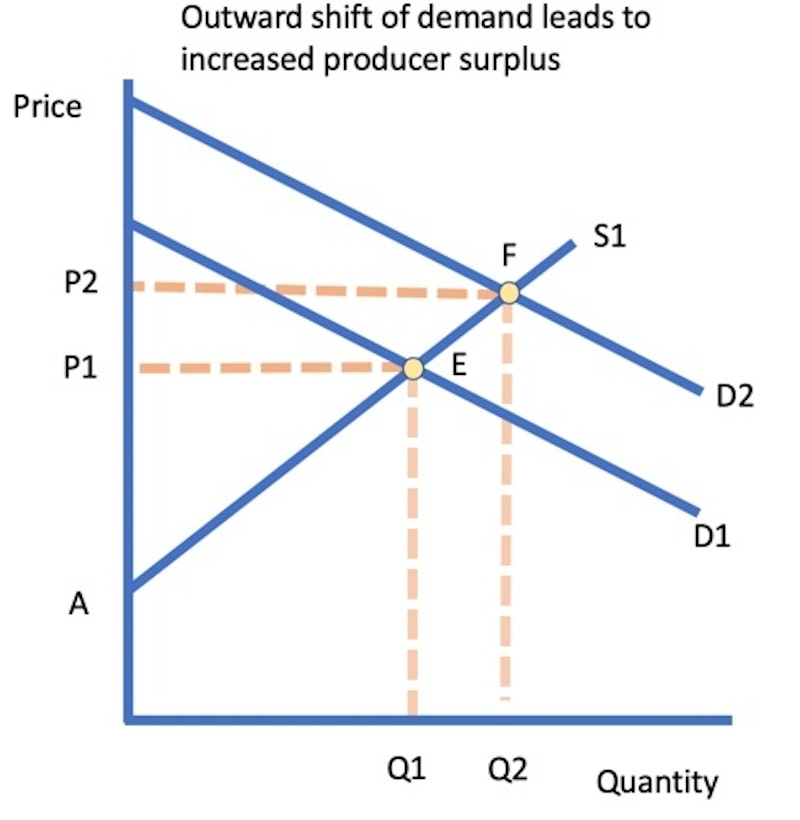Study Notes
Price Changes and Producer Surplus
- Level:
- AS, A-Level, IB
- Board:
- AQA, Edexcel, OCR, IB, Eduqas, WJEC
Last updated 3 Apr 2019
Here is an exemplar answer to this question: "Evaluate the impact of changes in price on producer surplus ."

Producer surplus is a measure of the profit that a supplier can earn from supplying goods and services. It is shown by the difference between the market price received and the minimum supply price that a firm such as a grower or manufacturer requires. One cause of an increase in producer surplus is an outward shift of supply for example caused by a fall in the cost of inputs. Price falls from P1 to P2 and quantity supplied expands to Q2. Producer surplus grows from area P1AB to P2BC. Although the market price has fallen (i.e. the supplier is getting less per unit) there has also been a reduction in costs and extra profit to be made from selling a greater quantity.

However, higher prices do not always mean that producer surplus will increase. Consider a tax imposed on producers by the government. In the diagram, we see the impact of a tax when demand is price sensitive (i.e. the coefficient of PED>1). This means that the producer only has a limited ability to pass on a tax to consumers in the form of higher prices. As a result, the market price rises by only a fraction of the tax per unit and the post-tax price received by the producer is much lower. We can see in this diagram that although the retail price has increased, the amount of producer surplus has fallen by especially because of a contraction in demand. PS has dropped from P1EA to P3FA.

Producer surplus is likely to increase when a firm benefits from an increase in market demand. For example, farmers might be able to increase their prices when consumer demand rises – this is shown in the diagram. When demand shifts outwards from D1 to D2, the equilibrium price rises from P1 to P2. Now the grower is getting a much better price and is also selling a higher quantity. Producer surplus increases from P1AE to P2FA - in other words, the farmer is expected to make a higher profit. But this depends on the extent to which supply can actually expand to meet the higher demand. Farmers may have stocks that they have bring to the market; manufacturers may have some spare capacity.
You might also like

Economics at the Movies - Pretty Woman, Consumer and Producer Surplus
19th October 2010
Fair Trade and Development
Study Notes
Understanding Producer Surplus
Topic Videos
Changes in Consumer and Producer Surplus (MCQ Revision Question)
Practice Exam Questions
Deadweight Loss of Economic Welfare Explained
Topic Videos
Indirect Taxes and Producer Surplus
Topic Videos
Welfare Loss - Applying The Concept in Exams
Topic Videos
Price Discrimination - Four Revision Videos
Topic Videos
Daily Email Updates
Subscribe to our daily digest and get the day’s content delivered fresh to your inbox every morning at 7am.
Signup for emails